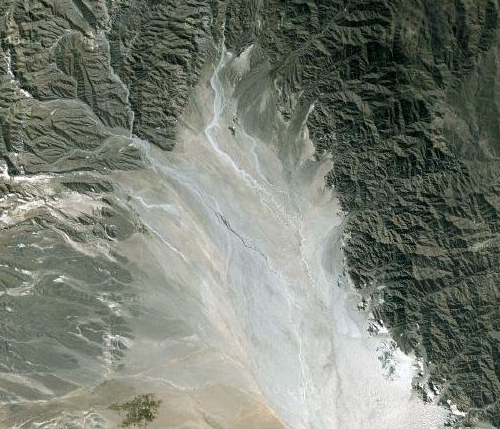Click here to find a “recipe” for homemade 100% ecofriendly wetwipes!! Good for a tight budget, too!
Since we left San Carlos de Bariloche, approximately 1,200 miles away, we have passed less than a handful of rivers on our route – it’s incredibly dry this side of the Andes mountain range, living in the world’s biggest rain-shadow! When we are lucky enough to pass a river that actually contains water in it, often it is adorned with the label “Rio Salado” or salt river. The heavily silt and salt-laden waters forge their way to the sea, but they rarely reach it because the dry air and baking sun wage war on the remaining moisture. They simply dry up in great salt pans. Where they have a go at making the long journey east, settlements are built. Entire cities, and crops and people take ALL the remaining water, nothing is left to chance for such a precious resource- it’s rather incredible! When we get the logistics wrong, which at times we do, the sensation of thirst can be devastating! Melodrama soon takes over and the long svelt strides we normally take (Ed – is this accurate?) soon are reduced into wobbly little granny steps as we totter along the vast empty stretches of pampa road in the fierce sun, dreaming of water and ice cream. Our tongues become arid and loll about as we pant in panic. It must be quite a picture.
We’re carrying 20 Litres per day now, solely for rehydration purposes
We have had to respond as best we can by carrying much more water, around 20 Litres per day now, solely for rehydration purposes – but what of personal washing? I personally have never been too preoccupied by an oppressive level of hygiene but my dear wife does have a certain level of civilisation which keeps us both alive I suspect, and our initial response was to try wet-wipes. These little towelettes have been guarded as guilty pleasures over the last month, deployed sparingly in my case, starting their work around my eyes, then ears, then face and neck. They are already looking grimy, but there’s always the other side. Underarms and feet are next. The little hard working rag is tired now, holes forming amidst the fibres, but still some of the moisture remains so we press on downwards to regions best left undisclosed. It is really working overtime. At this point I always offer it to Katharine in jest, it’s a tired joke. Anyway, exhausted, spent, knackered, it rallies for one last valiant act in the morning, normally just after breakfast, and is buried with the other stuff. It’s well used, such is life maintaining a superlite trailer.
But the plot thickens. I accidentally let one go through the wash the other day and it survived wonderfully, bright as a button. It got me thinking though – I had always assumed they were biodegradable paper fibres heavily matted but how could it survive? A quick visit online shows that a) the labelling is always vague and misleading, a problem which the industry/government need to sort, and b) given the care we taker to avoid any trace on our 5000 mile transect I should never have bought them, never mind disposed of them in the callous way I did; with a few exceptions, largely they’re synthetic in nature (non-woven polymers, sometimes mixed with wood pulp). And they’re not readily biodegradable. They will be sitting in some of the places I left them for centuries. I am left red in the face, nevermind the other places that are forming sores since we stopped using them!
Oops. But what to do? The rubs in rare old places are indescribable, not to mention our unique piquance! But thanks to this little video I found online, we have a plan – homegrown wet wipes! Quick, cheap and easy to prepare, check it out at http://www.ehow.com/how_4786018_own-wet-wipes.html
